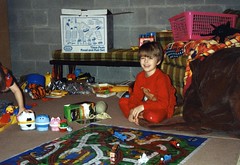I’ve been musing about this question since coming on-line to the homeschooling world three years ago after being content with the “in real life” experiences I had always enjoyed. The on-line world of home/unschooling was SO different than my real life experiences. I also saw a considerable shift in the past ten years in real life as well. I’m on a couple e-mail lists that are involved with a similar discussion: politics and homeschooling . . . where are we going?
I’ve not been heavily involved in the politics of homeschooling, but always very interested and supportive in my place to continue the freedoms we all enjoy. I have often been closely associated with those home/unschooler’s whose passion and purpose it was to be a “thumb on the pulse of homeschooling politics”. My particular passion and purpose has leaned toward supporting home/unschoolers in understanding the learning process, learning styles, timeframes, and the such. But, it seems that I’m at a place that I could take another step toward understanding and supporting those who are concerned about protecting our freedoms in homeschooling, both now and for the future.
So, I got to thinking about what has changed in homeschooling since I began, and how does that fit into the legislative and political history of homeschooling, and can it give insights as to where we are now, and where we are meant to go in furthering the cause of freedom for homeschooling. But, first, what is homeschooling to me? I chose homeschooling as an option to not be connected to the auspices of public institution . . . at all. I chose homeschooling as an option that granted me the autonomy to discover what “education” was for me and my family and each individual child. I chose homeschooling as the path that granted me freedom to make our own choices on a path less traveled. I chose homeschooling because of the myriad of resources that I would be able to utilize that was available in the greater world. I chose homeschooling to open up possibilities for more . . . more than the stilted environment, programs, dynamics, and watered-down, systematic spoon-feeding that existed in government institutions. I had very proactive reasons for choosing homeschooling for our lifestyle of learning.
The first five years of home/unschooling obviously became my measuring stick of what I thought homeschooling was not just to me, but for many others. I felt a great cameraderie of working together and sharing resources and gifts with one another as we respected each of our differences that simply added fodder for great homeschooling discussions. The past ten years, I’ve felt as if I have been floating in a time warp, continually looking for what I once had, but thinking it was simply my location, or my family logistics, which it might be, but now wondering if it is more than that. Several experiences have been accumulating that have served as a catalyst for my inner activist to emerge with some definitive thoughts and ideas. I am now beginning to see the connection to what I had, and what I am seeing. I share two differences that actually point to one main element: how we view autonomy and resources. It’s the difference between getting to choose who takes care of you versus wanting to take care of yourself. It’s the difference between believing in the system but wanting more choices versus not believing in the system and wanting to carve out another way.
Choosing Who Takes Care of You vs. Wanting to Take Care of Yourself
The first difference that really had impressed me when I first became part of it was the consensual process involved in the inclusive support groups to which I became a part. There really was no leader! How amazing! Oh, there was someone called a “coordinator”, but that wasn’t about making decisions for the group, but simply, well, coordinating everyone and what they wanted and how they would contribute. There was also another important job: the newsletter person. They simply took in everyone’s offerings and needs and assembled them into a monthly newsletter from which we could all draw as resources for our own individual home/unschooling lives. During our monthly meetings, there was certainly a main focus of encouraging everyone to contribute in some way in providing a resource that could be offered to others. As is usual in our human society, it still often fell on the 20% to manage 80% of what happened, but such it was, and camaraderie prevailed as friendships and respectful interactions were the norm. This seemed to be the modus operandi of the three support groups to which I affiliated in three states the first 5 years.
In 1998, we moved to central Pennsylvania, and then in 2000, we moved to North Carolina. I was to discover a very different mode of operation, particularly prevalent in North Carolina as I had been minimally involved in support groups in central Pennsylvania for personal family reasons that needed more of my attention. There were leaders in these supports groups, even boards! Wow, how organized, was my initial reaction. Another thought was that since this was more of a Christian (non-statement of faith) support group, maybe that’s how they ran things and I hadn’t realized it. (As was typical, I was having a hard time finding an inclusive group – in central PA as well -, so I joined this one to check it out since it didn’t have a statement of faith requirement.) There were funds that were used for activities, they still looked for volunteers for various “programs” that seemed to already be established. It seemed much more like a “well greased wheel”. It was still newsletter-based, and individuals could offer any type of supports and resources to the group as they desired, so I recognized that still.
Since this first exposure to leadership, presidencies, boards, and the such, I have come to realize that most support groups, local and state, operate in this manner. Had this always been the case, or has this been more recent . . . let’s say the past ten years? Within this governmental system, I did witness power struggles, overthrows, and separations occur more consistently. In the consensual support groups I had become accustomed to, I remember people simply being thankful someone was willing to coordinate and do the newsletter. There was no hierarchial power to resist; the individuals within the group were the voice. The coordinator and newsletter person simply carried it out.
Is this a shift in perspective? In the day I began homeschooling, so many stood on the ideal of freedoms and personal choice, so it makes sense that our inclusive groups would operate in order to have that expression realized. Each voice was equal and together we worked things out for all to get their needs met. In the leadership paradigm, there seems to be more of a democratic process. Not that it is bad since our country is founded on that type of government, but then again, protection of the masses is important in that dichotomy. I had chosen homeschooling for individualistic reasons; to be the author of my own path. I definitely felt like “one of the masses” being spoken TO when part of the democratic support groups.
So, what are people looking for today? A resource that supports and empowers their freedom of personal choice through working together to create a resource that can work to meet some of their needs? Or a resource that helps them belong to a group that believes in what they do and will help them get what they want and feel “taken care of”? There’s a shift in focus between the two . . . Am I saying that one is good and one is bad? No. I’m saying that it might be indicative of where the perspective of homeschoolers are today versus where they were fifteen years ago.One undesirable effect of testosterone the cause of gastritis. http://www.daveywavey.tv/viagra-7155.html cialis generika
Believing in the System but Wanting More Choices vs. Not Believing in the System and Wanting to Carve Out Another Way
Now, here’s my biggee that I’ve been working through, and maybe putting a voice to it in this manner might help clarify some things for me. When I chose to homeschool, I automatically chose to find my own resources. I mean, that was the point! I felt there was more out there available to me in the free world in the shape of information, technology, and mankind. I was eager to find meaty, enriching, authentic, appealing, diverse resources from which to sample. I was not disappointed! The children “ate it up” and continued to love to learn and find joy in the process. Searching and discovering resources in various places in our community became treasures to be mined and celebrated. Each of us became expert at finding the resources that would most appeal to us as individuals . . . One of our favorite activities was to go to a bookstore, where each person eagerly uncovered something they desired based on current interests to add to our growing library. We’ve honed mining for the gold down to a science!
This same mindset served me well when I was to discover that my fourth son was struggling with autism. I was given the word “autism” by a friend, and the next day, I was at the library, utilizing the research skills I had developed as a home/unschooler. I zeroed right in on books with the most current dates. I delved into each one, going through a book a day that first week. Within days, I knew my son was living with autism, and that I should seek out a diagnosis. I turned to parents for recommendations, and found a diagnostician who respected the intelligence and insights of the family members. Together we diagnosed my son, is how I viewed it, and how it played out. My diagnostician knew that I was hungry for as much information as she could direct me to, in all venues. It became the first time I ventured into conferences, taking in three in three months. It was through this searching that I found what my son needed to find happiness and joy in the world in which he was placed. As I got his needs filled through using volunteers that I trained and various resources that added elements that combined to give insight as to what to do for this particular child, other parents were amazed that I was so far into the intervention journey within weeks and months of the diagnosis. Most, it was noted, waited for others to show them what to do, and it would take about a year for them to discover no one was going to do that. This was why I was attracted to homeschooling. This is what I saw from other homeschoolers in that day.
So, what of today’s homeschoolers? Ours is a world of experts, specialization, labels, and the over-achiever mentality. Because of the proliferation of choice, the explosion of growth within homeschooling circles may be because so many can hang onto the expert umbrella through things like e-schools and other public school hybrids where they can “be taken care of”, but have a different choice of environment. Another segment of people are coming to homeschooling with a myriad of school-created labels attached to their children who are floundering in the system. The parents recognize that the environment in which their children were being educated doesn’t work for them, so they are seeking other choices under the same paradigm that might work better. These labels become evidence that another choice is needed, so they seek out experts who can help “take care of them” as they work tirelessly to help their child under that expert. Again, someone more qualified than schools have to help “take care of them” because of these so-called specialized problems. Or, there are parents who feel they can do a better job than schools and want to see their child excel (ala over-achiever mentality) and seek out all the best curricula and systems available as another choice “to take care of them” in order to meet the needs of their gifted children.
Again, there is a paradigm shift that shows a totally different perspective for the newer homeschooler. The homeschooler of the past left behind the mentality, the perspective, and the clutches of public institutional thinking, processes, procedures, perspectives and mentalities in belief that there was a more holistic way of viewing learning, particularly outside the confines of an inflexible entity. I believe many of today’s homeschooler’s actually believe in the system, but want more choices within that realm in order to be “taken care of” in a different way because of labels, over-achiever needs, and/or need for specialization. I use all that is available in the world as potential resources from which we can choose. Even in the special needs arena, I sought out and utilized professional opinions and ideas, conferences, and print materials as potential resources to me in finding what my son(s) needed. I used these resources in my journey to mine for the diamonds that I could take and apply to our holistic lives in a way that was individualized to the child.
Again, there is a shift in perspective here. It appears that parents of today are partnering their intelligence and energies with the experts and systems available to create another option for an individualized, but pre-packaged education about which they can get excited about following. Myself and other homeschoolers I started with were using their intelligence and energies to map out their own path to what learning is at a more holistic level that will look different child to child, stage to stage, situation to situation. Again, am I saying one is better than another? No. But, this shift changes what homeschooling is, in my opinion.
So many today are looking for alternative choices to the public school settting, but has an aspect of being taken care of under another system of learning and resources. They rely on experts and support groups and curriculum producers and other homeschooling systems (like HSLDA) created to do just that. There are fewer new homeschoolers, it seems, that are “independent homeschoolers” (is the word I’m hearing that I like, actually) whose perspective is to carve out their own thinking about how learning takes place for their children. It seems so many look out first, to place on; those like me and other older-timers wanted to start looking in first, and then see what was out there that could enhance in the natural world of information.
I can now see how the freedoms of homeschooling as I once understood it can be threatened by the new face of homeschooling. There will have to be a place for both, but how do we accomplish this legally without infringing on the rights of one group for the other?It may be in the name!




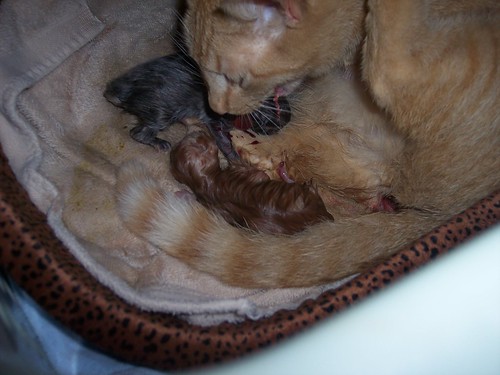
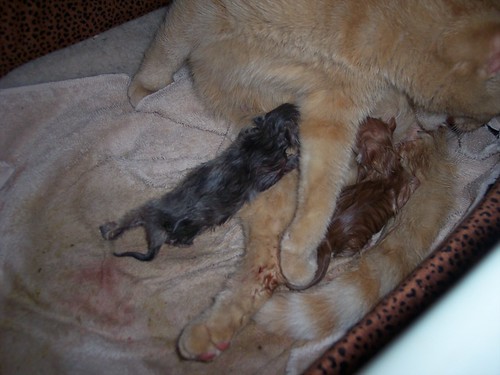
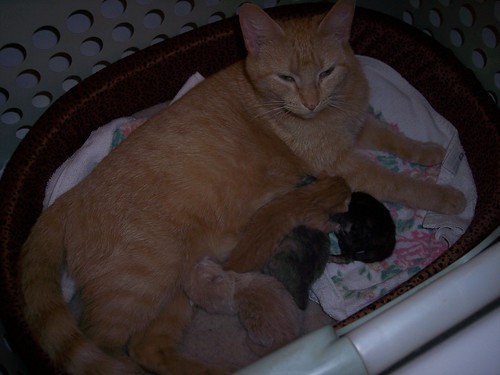

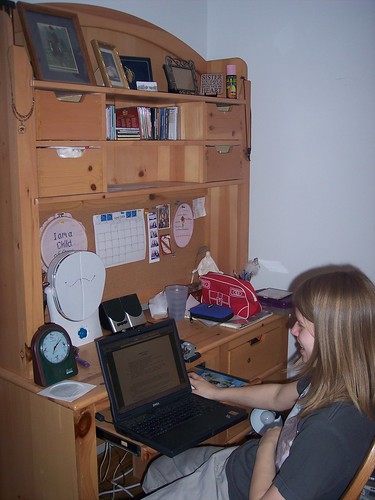

 )
) That first attempt at homeschooling my way lasted about two weeks; his way has worked beautifully the last 15 years . . . for him!
That first attempt at homeschooling my way lasted about two weeks; his way has worked beautifully the last 15 years . . . for him!

